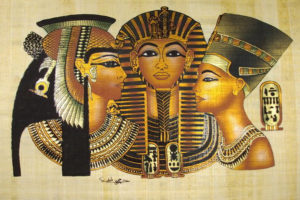
She is making Indian traditional art and textile fashionable and trendier for the western audience. And for that Neishaa Gharat , founder and designer for the House of Gharats in London, has won many awards and laurels.
She was recently awarded the Indian Global Excellence award as a design entrepreneur and was nominated for the Asian Women of Achievement Awards in the UK.
Excerpts from an interview with Kavita Bajeli-Datt of The Indian Diaspora:
How would you describe House of Gharats to someone unfamiliar with Indian textiles?
House of Gharats apparel and accessory designs tell a story of the interweaving of cultures, social changes and the juxtaposition between tradition and modernity. We create a bridge between art, textile crafts and fashion. The brand is driven by the values of art and craft, rather than fashion, and as a result, our designs are not about trends but are timeless pieces that can be passed down through generations.
Textiles are the bedrock of fashion and that’s where our fashion story begins. The textiles of the Indian subcontinent have captivated and adorned the world for more than 2000 years. No other region has been home to a greater variety of fibre, fabric or patterning technique. Indian craftspeople created magnificent woven embroidered and resist patterned textiles for centuries.
House of Gharats is passionate about sourcing the most beautiful hand printed and woven Indian textiles, supporting age-old textile arts and crafts. Its aim is to give the aesthete an opportunity to understand the depth of Indian arts and textile crafts while creating a product that is wearable.
The collection of ready to wear pieces brings together a range of traditionally woven or printed Indian textiles like block printed cotton, luxurious silk brocades and Savile Row tailoring. The textiles are made using traditional Indian methods of printing and weaving.
The collection of silk scarves works as a platform to showcase the work of Indian indigenous artists, photographers and British and International artists.
What is your background in design?
I have always been a design entrepreneur; I studied visual arts and co-founded and pioneered the concept of design and communications studio in Mumbai in the mid-nineties. I learnt to be an entrepreneur on the job and we grew from a team of 3 to 60, which was a size unheard of in that decade and worked with global and national brands.
All through the years, Indian textiles have remained a personal passion. Since being a little girl, I have grown up loving my mothers and aunts luxurious silk and cotton saris. The traditional uncut cloth has always fascinated me for its timeless beauty and I am keen that the future generations continue to revel in this rich textile heritage but find their own expression, like I am finding my own story through the myriad of global design influences, living in London and connecting to my roots.
Today being a designer is all encompassing. I enjoy the freedom and constraints to design, write, shoot, film, illustrate, create, collaborate and really use all my creative forces in my work. Designing for House of Gharats to designing for social change, for example, an Art installation to a Mobile classroom that teaches in the slums of Mumbai co-exist comfortably in my studio in London. The culmination of cultures makes me who I am, it continues to be living and working anywhere in the world with a sense of deep-rooted “Indianess” from within.
Have you received recognition for your work in UK ?
Recently, I humbly received the Indian Global Excellence award as a design entrepreneur and was nominated for the Asian Women of Achievement Awards in the UK. I believe it is going to be a long journey ahead and this is just the beginning.
How do your collections connect to British Society?
2014 marked 400 years of shared history between Britain and India. My endeavour is to investigate and re-interpret this history through the threads of textiles and fashion. The aim is to find our future together. The cross influences have been significant and will continue to be as cultures are mingling more than ever. Technology and media are shrinking distances. Through House of Gharats, we engage with a generation of British designers, textile & design enthusiasts, fashionistas reinterpreting the past, present and future of Britain and India. As Britain and India are finding their future together, we are weaving stories through collaboration, co-creation, business, shared values and learning.
Where can people get their hands on House of Gharats?
Currently, we are represented in Taj Khazana at St James Court, a Taj Hotel in London, a quiet masterpiece discreetly tucked away between Buckingham Palace and Westminster Cathedral. We found perfect synergy with Taj Khazana as our design ethos strongly corresponds with theirs. Their philosophy resonates with our aim to support traditional arts and crafts of India and make them available globally. Those who are interested in the brand will be able to register on our website (http://theindiandiaspora.com/)to keep up to date with our new collections and bespoke work.




